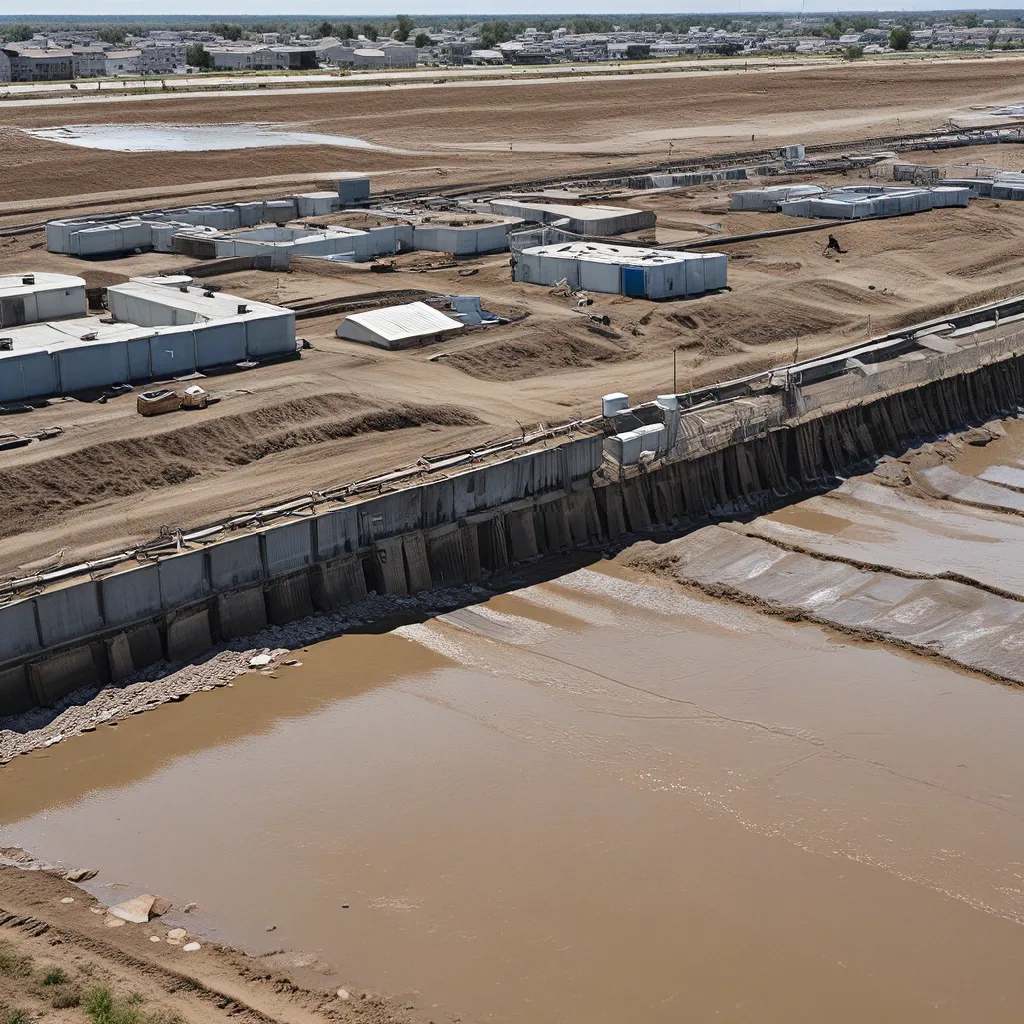
As the world grapples with the ever-increasing impacts of climate change and extreme weather events, the resilience of our critical infrastructure has never been more crucial. Among the essential services that must withstand these challenges is our wastewater treatment systems – the unsung heroes that keep our communities clean, healthy, and functioning, even in the face of disaster.
Weathering the Storm: Wastewater Treatment and Extreme Events
In recent years, we’ve witnessed a staggering increase in the frequency and intensity of natural disasters. The National Oceanic and Atmospheric Administration (NOAA) recorded an astounding 28 weather and climate disasters in the United States alone in 2023, shattering the previous high of 22 events in 2020. The economic toll of these disasters is equally staggering, with the recovery efforts costing at least $929 billion.
But the true impact of these extreme events extends far beyond the initial destruction. As communities scramble to rebuild and recover, the resilience of their critical infrastructure is put to the test, and nowhere is this more evident than in the realm of wastewater treatment.
Wastewater Treatment: The Unsung Hero of Disaster Response
Wastewater treatment plants are the unsung heroes of disaster response, quietly working around the clock to ensure that even in the midst of chaos, our communities can maintain basic sanitation and hygiene. These facilities play a crucial role in maintaining public health and protecting the environment, and their resilience is essential to the overall resilience of our communities.
When a natural disaster strikes, the challenges faced by wastewater treatment plants are multifaceted and complex. Flooding, power outages, and damage to infrastructure can all disrupt the delicate balance of these systems, leading to the potential for sewage spills, contamination of water sources, and the spread of waterborne illnesses.
According to the United Nations Office for Disaster Risk Reduction (UNDRR), the consequences of such disruptions can be catastrophic, with the potential to undermine the safety and wellbeing of entire communities. Imagine a scenario where a major hurricane knocks out power to a wastewater treatment plant, leading to the release of untreated sewage into nearby waterways. The environmental and public health implications of such an event are staggering, and the long-term consequences can be far-reaching.
Preparing for the Worst: Building Resilient Wastewater Systems
Recognizing the critical importance of wastewater treatment in the face of extreme events, municipalities and utility providers are taking proactive steps to enhance the resilience of their systems. This involves a multifaceted approach that includes:
Infrastructure Upgrades: Investing in the modernization and strengthening of wastewater treatment facilities, including measures like flood-proofing, backup power generation, and redundant systems to ensure continuity of service.
Emergency Preparedness: Developing comprehensive disaster response plans that outline clear protocols for maintaining operations during and after an extreme event. This includes strategies for prioritizing critical functions, mobilizing resources, and coordinating with other emergency services.
Collaboration and Partnerships: Fostering strong partnerships between wastewater treatment providers, local governments, and emergency management agencies to ensure a coordinated and effective response to disasters.
Technological Innovations: Embracing the power of advanced technologies, such as real-time monitoring systems, predictive analytics, and remote control capabilities, to enhance the responsiveness and adaptability of wastewater treatment systems.
As the experts at WaterFM point out, the need for more resilient water infrastructure is becoming increasingly urgent as the impacts of climate change continue to intensify. By investing in the resilience of our wastewater treatment systems, we not only safeguard the health and well-being of our communities but also contribute to the overall disaster resilience of our societies.
The Ripple Effects of Wastewater Resilience
The benefits of investing in the resilience of wastewater treatment systems extend far beyond the immediate emergency response. When these critical facilities are able to maintain operations during and after a disaster, the ripple effects can be felt throughout the community.
Public Health and Safety: Uninterrupted wastewater treatment helps prevent the spread of waterborne illnesses and ensures that communities can maintain basic sanitation and hygiene, even in the midst of a crisis.
Environmental Protection: By mitigating the risk of sewage spills and the contamination of water sources, resilient wastewater systems play a vital role in preserving the natural environment and protecting local ecosystems.
Economic Continuity: The ability to maintain wastewater treatment services during and after a disaster helps businesses and industries to continue operations, minimizing economic disruptions and supporting the overall resilience of the local economy.
Community Resilience: When the essential services provided by wastewater treatment systems are reliable and resilient, it helps to instill a sense of confidence and trust within the community, empowering residents to better withstand and recover from the challenges posed by extreme events.
Embracing the Future: Continuous Improvement and Innovation
As the world continues to grapple with the ongoing impacts of climate change and the increasing frequency of extreme weather events, the need for resilient wastewater treatment systems has never been more urgent. But this challenge also presents a unique opportunity for innovation, collaboration, and continuous improvement.
At Alpha Wastewater, we are at the forefront of this effort, working tirelessly to enhance the resilience of wastewater treatment facilities across the country. Through our expertise in infrastructure upgrades, emergency preparedness planning, and the integration of cutting-edge technologies, we are empowering communities to weather even the most daunting of storms.
As we look to the future, it’s clear that the resilience of our wastewater treatment systems will be a critical factor in the overall resilience of our societies. By investing in this essential infrastructure, we are not only safeguarding the health and wellbeing of our communities, but also laying the foundation for a more sustainable and resilient future.
So, the next time you flush the toilet or wash your hands, remember the unsung heroes working tirelessly behind the scenes to keep our communities clean, healthy, and prepared for whatever challenges may come our way. Because when it comes to disaster resilience, the strength of our wastewater treatment systems could very well be the difference between survival and catastrophe.